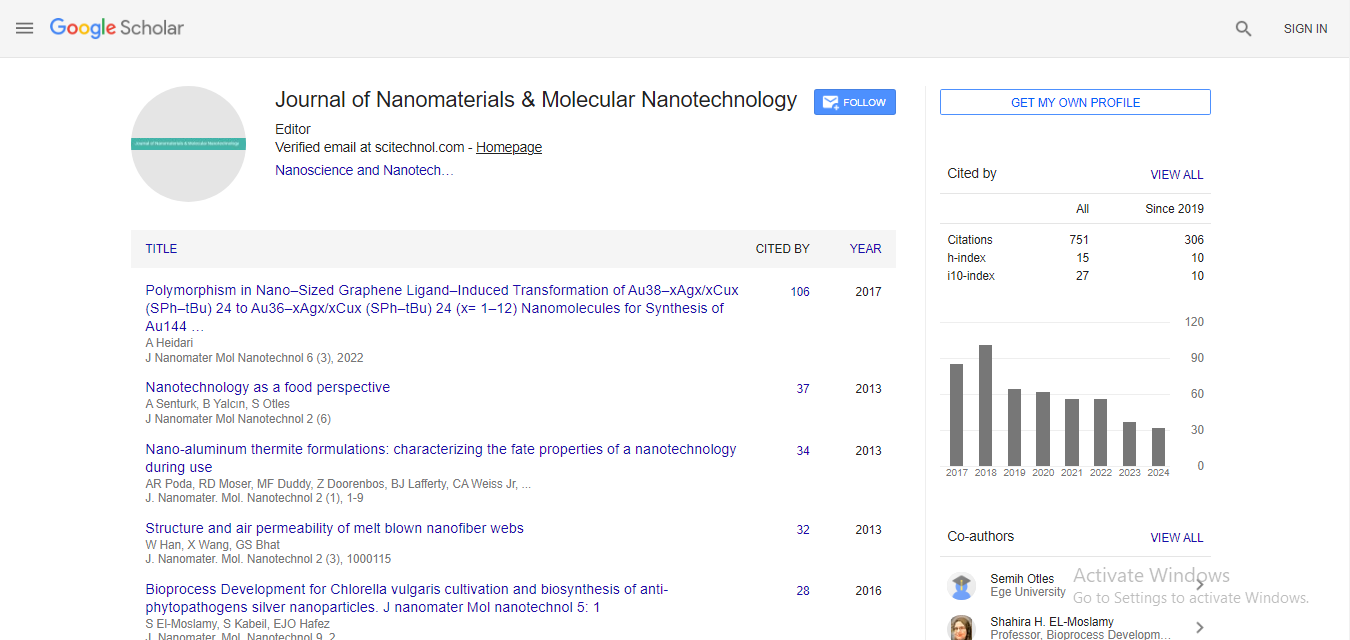Laser floating zone for tuning thermoelectric properties of CaMnO3 system doped with Gadolinium
N.M. Ferreira,* M.A. Madre, A. Sotelo, O.J. Dura, A.V Kovalevsky and F.M. Costa
Universidade de Aveiro, Portugal
Universidad de Zaragoza, Spain
University of Castilla-La Mancha, Spain
: J Nanomater Mol Nanotechnol
Abstract
Thermoelectric materials present a unique power generation solution due to their capability to transform waste thermal energy into electricity without requiring moving components. Transition oxides-based ceramics are one of the most promising, due to their high thermal and chemical stability when working under oxidizing atmospheres, at high temperatures- Donor-doped CaMnO3 is an n-type semiconductor with perovskite structure, being considered as a potential n-type leg in thermoelectric modules. This oxide presents stability at high temperatures and allows tuning the relevant electrical and thermal transport properties through doping. In this work, Gd doped CaMnO3 precursors have been prepared to produce fibres through the laser floating zone technique using different pulling rates and conditions. However, as-grown fibres did not present thermoelectric properties due to the presence of high amounts of secondary phases, leading to very high electrical resistivity values. The results have highlighted the importance of annealing procedures to reduce electrical resistivity, due to the decrease of secondary phase’s amount, and producing promising thermoelectric performances. The annealed samples present higher ZT values when the growth rate is decreased, reaching around 0.22 for the lowest growth rate, which is very close to the best values reported in the literature for these materials. Moreover, this procedure possesses an additional advantage considering that these samples can be directly used as n-type legs in thermoelectric modules for high-temperature applications. However, further studies should be made to determine the optimal amount of dopant and magnetic field. The obtained guidelines suggest that LFZ is a suitable technique for processing thermoelectric oxides, if optimized control over growth parameters and re-equilibration conditions is imposed.
Recent Publications:
1. N.M. Ferreira, A.R. Sarabando, M.C. Ferro, M. A. Madre, O.J. Dura, A. Sotelo, Tunning thermoelectric properties of Ca0.9Gd0.1MnO3 by laser processing, Journal of Materials Science: Materials in Electronics 31 (2020) 18913-18922, DOI: 10.1007/s10854-020-04428-x.
2. N.M.Ferreira, D.Lopes, A.V.Kovalevsky, F.M.Costa, A.Sotelo, M.A.Madre, A.Rezania, Thermoelectric modules built using ceramic legs grown by laser floating zone, Ceramics International 46 (2020) 24318-24325, DOI: 10.1016/j.ceramint.2020.06.213
3. N.M. Ferreira, N.R. Neves, M.C. Ferro, M. A. Torres, M. A. Madre, F.M. Costa, A. Sotelo, A.V. Kovalevsky, Growth rate effects on the thermoelectric performance of CaMnO3-based ceramics, Journal of the European Ceramic Society, 39 (2019) 4184, DOI: 10.1016/j.jeurceramsoc.2019.06.011
4. N. M. Ferreira, M. C. Ferro, A. R. Sarabando, A. Ribeiro, A. Davarpanah, V. Amaral, M. A. Madre, A. V. Kovalevsky, M. A. Torres, F. M. Costa, A. Sotelo, Improvement of thermoelectric properties of Ca0.9Gd0.1MnO3 by powder engineering through K2CO3 additions, Journal of Materials Science 54 (2019) 3252–3261, DOI: 10.1007/s10853-018-3058-x
5. F.P. Carreira, N.M. Ferreira, A.V. Kovalevsky, Laser processing as a tool for designing donorsubstituted calcium manganite-based thermoelectrics, Journal of Alloys and Compounds 829 (2020) 154466, DOI: 10.1016/j.jallcom.2020.154466
Biography
Nuno Ferreira, is a PhD in Physics Engineering (2014), currently is a researcher at i3N, Physics Department at University of Aveiro, Portugal. He had participated in several R&D projects on material science. He has experience researcher in the study and development of ceramicsbased materials, prepared through conventional methods (melting, solid stated), with a particular focus on laser processing (crystal growth – LFZ and surface sintering/modification). Present sample preparation and characterization skills include various techniques such as electrical conductivity and magnetic properties of various oxide materials. Current focus materials: thermoelectrics, ferroelectrics and glass matrices doped with transition metals and rare earth for energy storage and conversion applications. Main expertise is related to structural, magnetic and electrical properties of materials prepared by laser processing.
 Spanish
Spanish  Chinese
Chinese  Russian
Russian  German
German  French
French  Japanese
Japanese  Portuguese
Portuguese  Hindi
Hindi 



